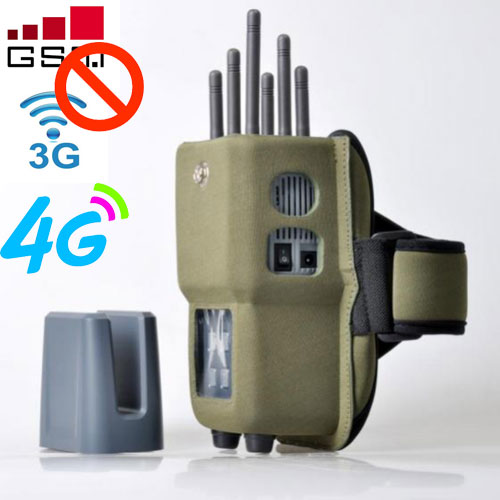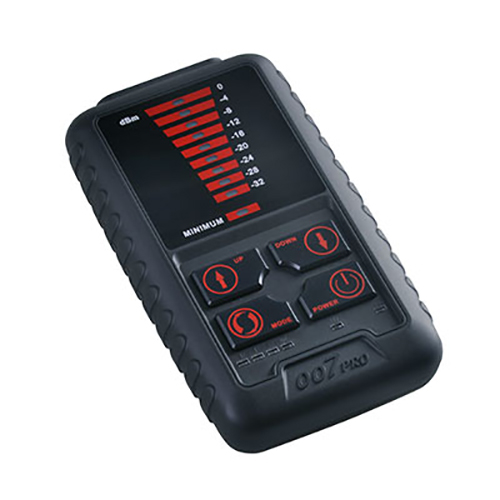
The drone jammer consists of a handheld host and a battery pack. The handheld host is designed as a multi-band transmitter antenna, which can simultaneously generate UAV flight control shielding signals and satellite positioning interference signals in the 2.4GHz/5.8GHz band, and through the uplink flight control channel and satellite positioning channel of the UAV blocking interference, so that it loses the flight control command and satellite positioning information, and can not fly normally. According to the design of the drone, it will produce the control effect of returning, landing and falling.
In the offensive and defensive situation, there is usually a distance between the operator of the drone and the sensitive area that needs to be fortified. The drone took off from the vicinity of the operator and gradually flew to the fortification area. When the drone reaches the vicinity of the fortification area, it can carry out effective investigation or destruction activities, and the distance from the drone to the fortification area is much closer than the distance to the operator.
Under normal circumstances, all the uplink signals sent by the operator (sent from the ground to the drone) will gradually weaken due to the long distance. With the same power, the jammer is closer to the drone and the signal will be stronger than the operator. The down signal received by the interferometer will also be stronger than the operator. However, the defense target for the downlink signal is that the operator does not receive it, and the distance from the drone to the operator is similar to the distance from the defender to the operator. Therefore, blocking the downlink signal does not occupy the terrain advantage.
From the above analysis, it can be seen that the interference uplink signal is more favorable. The uplink signal is usually a remote control signal, which is directly related to the control of the drone. If the uplink signal is disturbed, the drone will lose its immediate control and can only operate according to the preset steps of the program. The downlink signals are mainly telemetry and images. Although there may be sensitive information, it is less important than the control signal. In addition, the defender does not have an advantage in the situation, and usually adopts a laissez-faire attitude to the downlink signal.



